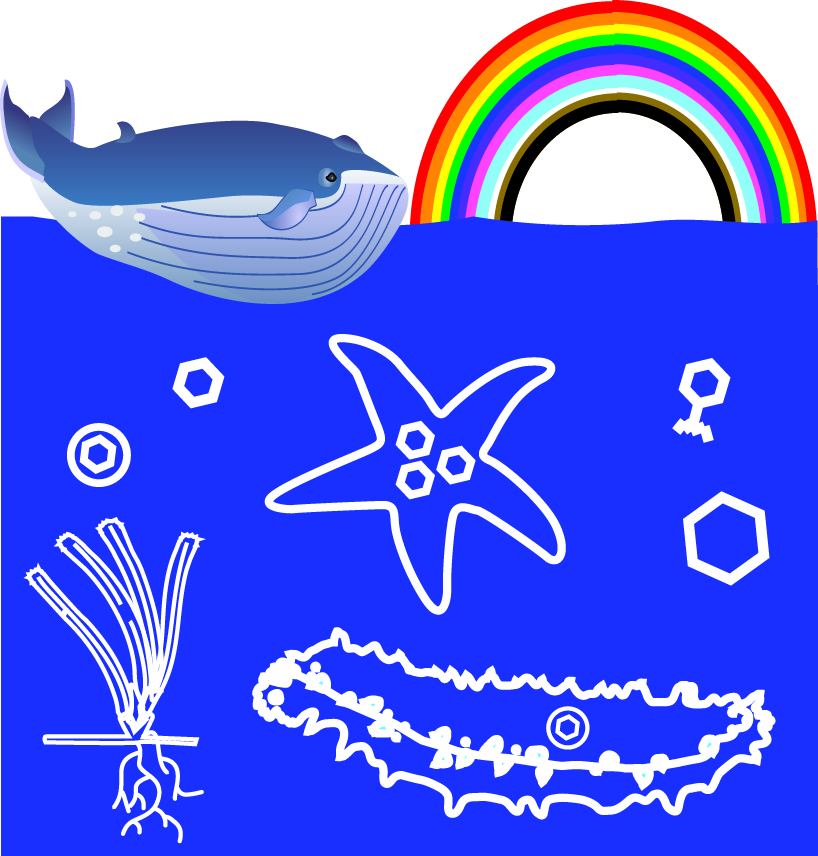Powered by the Team Aquatic Virus
Welcome to the webpage of the Cornell Marine Mass Mortality Lab (also known as the Team Aquatic Virus) – Ian Hewson’s lab in the College of Agriculture and Life Sciences at Cornell University. Here you will find information about who we are, what we do, and how we do it!

CM3L acknowledges that Cornell University is located on the traditional homelands of the Gayogo̱hó꞉nǫ’ (the Cayuga Nation). The Gayogo̱hó꞉nǫ’ are members of the Haudenosaunee Confederacy, an alliance of six sovereign Nations with a historic presence on this land. The Confederacy precedes the establishment of Cornell University, New York State, and the United States of America. We acknowledge the painful history of Gayogo̱hó꞉nǫ’ dispossession, and honor the ongoing connection of Gayogo̱hó꞉nǫ’ people, past and present, to these lands and waters. We encourage all who engage with us to learn more about the Gayogo̱hó꞉nǫ’, their history, and people, and to take meaningful action to support indigenous scholars and their communities.
See where we’ve been!


Hello Ian! My name is Vanessa Michelou and I am the new Senior Microbiologist at the Monterey Bay Aquarium. I came across your lab by chance while tinkering on tweeter and found some of your work super interesting to this new field of research I now work in (the microbial world of aquariums!).
I specifically wanted to ask you about something I saw on your tweeter feed….you asked if anyone knew of any studies which have looked at how bacterioplankton vary between instant ocean and natural seawater in aquaria? Or how instant ocean affects microbiome composition in aquatic invertebrates? Did you ever get any responses?
I ask because here at the aquarium we only have Monterrey bay water circulating through all our exhibits (no instant ocean ever used!) and I too am curious to know from other places that do use such artificial seawater media, what their microbial worlds may look like, or what they bring that we might not have in our own systems or vice versa…..
Anyhow, I guess I also just wanted to introduce myself and tell you I really like your work and will be following some of your cool projects along! Feel free to reach out if you have any questions or interesting thoughts.
Best!
Vanessa
Vanessa Michelou, Ph.D.
Senior Microbiologist
P (831) 648-4835
Monterey Bay Aquarium
886 Cannery Row, Monterey, CA 93940
http://www.montereybayaquarium.org
Our mission is to inspire conservation of the ocean.
LikeLike
Hi Vanessa,
I caught this message on my website – please feel free to email me at hewson@cornell.edu, since I almost never see any of these messages!
Great to hear from you! Your aquarium is fascinating – I worked a while ago on sea star wasting with Mike Murray, and more recently had contact with another person in your role (Beth? Fiori). Certainly lots of interesting work has been done looking at aquarium vs natural systems, mostly spearheaded by Natassia Patin and Frank Stewart in Georgia. They looked at microbiome composition over time in the enormous exhibit at the Georgia Aquarium (https://journals.asm.org/doi/full/10.1128/aem.00179-18) and found that while there are similar cell densities, the representative organisms are really different (albeit belonging to the same weedy clades of gammas) – and surprisingly dynamic over time. Similarly Tyler Carrier has done some work looking at microbiomes as they change from wild to captive animals, and found that much of their microbiome changes when moving from seawater to instant ocean.
I asked this question because we’ve seen some highly differential response in pathogen-host virulence in echinoderms – the pathogen of Diadema for example infects only in seawater and does not at all in instant ocean. I suspect that this relates to the ambient bacterioplankton community since the pathogen (a ciliate) begins as a bacterivore and then becomes histophagous when conditions amenable to consuming larger prey arise. All our experiments are in tiny volumes (up to 10 gallons), and we have noted in the past that bacteria in instant ocean are less productive and suspected they are compositionally very different. The grand challenge for folks like us at non-coastal institutions is performing experiments that mimic the environment, so often folks turn to instant ocean because of accessibility. However, I guess this is even more of an excuse to come to the coast when possible!
Best,
Ian
LikeLike